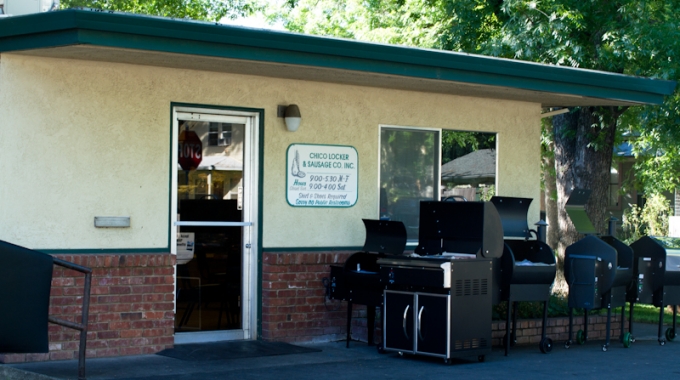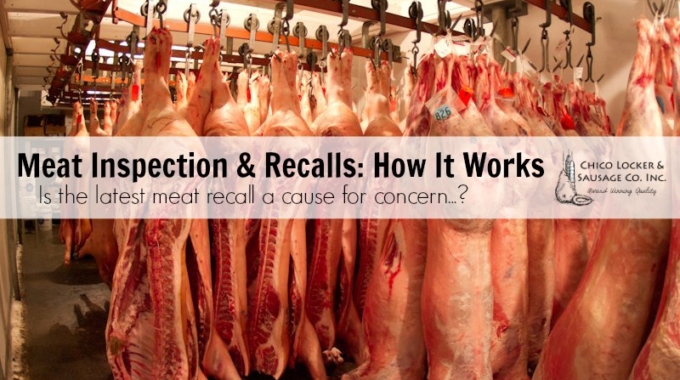
As a business who’s been in the meat industry and seen many different sides of the industry, we’d like consumers to know that you can find good meat no matter where you go. Don’t feel like you’ve got to spend ridiculous amounts of money to get the best meat out there just because your neighbors do, or your friends do. Buying meat doesn’t have to be keeping up with the Jones. Good meat doesn’t have to be beef that was fed rice wine or even massaged their entire life. Feed and how an animal is raised can change taste, texture, and marbling (intramuscular fat), but it doesn’t change the fact that all are striving for quality. And quality can be found even at your big box store.
The truth is that there are thousands of butcher shops, farmers, ranchers, and everyday people just like yourself out there who are giving their all to produce quality products that you can find anywhere! Buying and shopping for meat doesn’t have to be hard or stressful, it can be fun, it can be rewarding, and it can be educational if you choose to make it that way.
The key to buying meat? It isn’t in WHERE you buy the meat… The key is in how you cook the meat. By understanding where a cut came off an animal, it can help you understand how to cook it and in turn, make it amazing! This is one of the reasons why we focus so much on sharing recipes, techniques, and educating our readers on their meat cuts. I am sure we all have had the experience of spending a little extra money on something and then it becomes a flop because we cook it improperly. And the key to cooking meat doesn’t have to be hard. In fact, some cuts of meat are extremely simple, take little to no extra ingredients, and turn out amazing!
So where do you find these keys for success? There are lots of online resources but one of the best resources is right out your back door.. Talk to a butcher! We are right here, talk to us! Don’t be afraid to ask questions or get suggestions. Seek out those local butcher shops and if there isn’t one if your area, turn to the phonebook or Google search. Check out your local university, many are still teaching meat science and may even have a meats lab you can visit! Small butcher shops more easily have the ability to give tours because in large plants, tours increase the risk for contamination in the plant as well as putting the employees or even visitors in danger. A lot goes on in butcher shops and it only takes one wrong move to seriously injure yourself or someone else.
Still struggling? Let us know! We have lots of friends in the industry across the nation. We would be glad to put you in contact with a local butcher shop in your area!
Social media has given business and industries the ability to reach people way beyond their choir. The meat industry, especially, can now utilize social media to share and show what has long happened behind closed doors. But meat industry as a whole is a little behind when it comes to social media, we are just beginning to make an appearance in social media, mostly with large trade publications and small local butcher shops. But regardless of the fact that we are late to the party, you can still find a ton of great information out there! Websites put out by the Beef Council like http://www.explorebeef.org/, http://www.porkbeinspired.com, and http://www.meatmythcrushers.com/ are great starting points. You can find recipes, you can find a simplified version of what goes on in slaughterhouses and butcher shops, you can find some truths behind some of the myths.
Personal blogs have become a favorite resource when it comes to finding out where your meat comes from. Meat scientists, local butcher shops, and other industry professionals have been taking to their keyboards to share their knowledge of the meat industry. Two of our favorites are: Mom at the Meat Counter and Farming America
We may be on all board for social media and the meat industry, but how much do we show? The decision to show more and show things that may be graphic is still debatable in the industry.
As professionals in the meat industry who advocate for showing it all, we’ve been told by some of my peers that consumers don’t want to see where their meat comes from. We’ve been told that by showing videos much like the ones Temple Grandin has been making will turn people away from meat. Slaughterhouses and butcher shops aren’t glamorous jobs. But that doesn’t mean we shouldn’t be honest, open, and up front with people who do want to know about how and where their meat gets to their plate. And that is something we am constantly striving to do.
Before the Temple Grandin videos, there was really no where to turn when you wanted a real look into a slaughterhouse. In fact, it wasn’t that long ago that Oprah took her cameras through a slaughterhouse for the first time on national TV. We are happy to see that “black veil of secrecy” is being lifted. And that the phrase, “if slaughterhouses had glass walls, everyone would be a vegetarian” is well on its way to becoming a myth.
The truth is no industry is perfect, no industry is 100% safe. We, as many others in our industry large and small, take pride in what we do and strive to be the best we can. To produce the best quality products we can, at prices the average person can afford, and to produce the safest products we can. That are the true goals of the meat industry. Not what you read in the New York Times, not the special you saw on ABC or CBS. As a small, local butcher shop, we are more than open to share what we do. We strive to be honest and admit where our industry has its downfalls. And we hope that our industry continually strives to do the same.
Related articles







Pingback: Charleston, South Carolina… History, Food, and Fun. | [ j. l. d. ] Photograph Blog
nice article